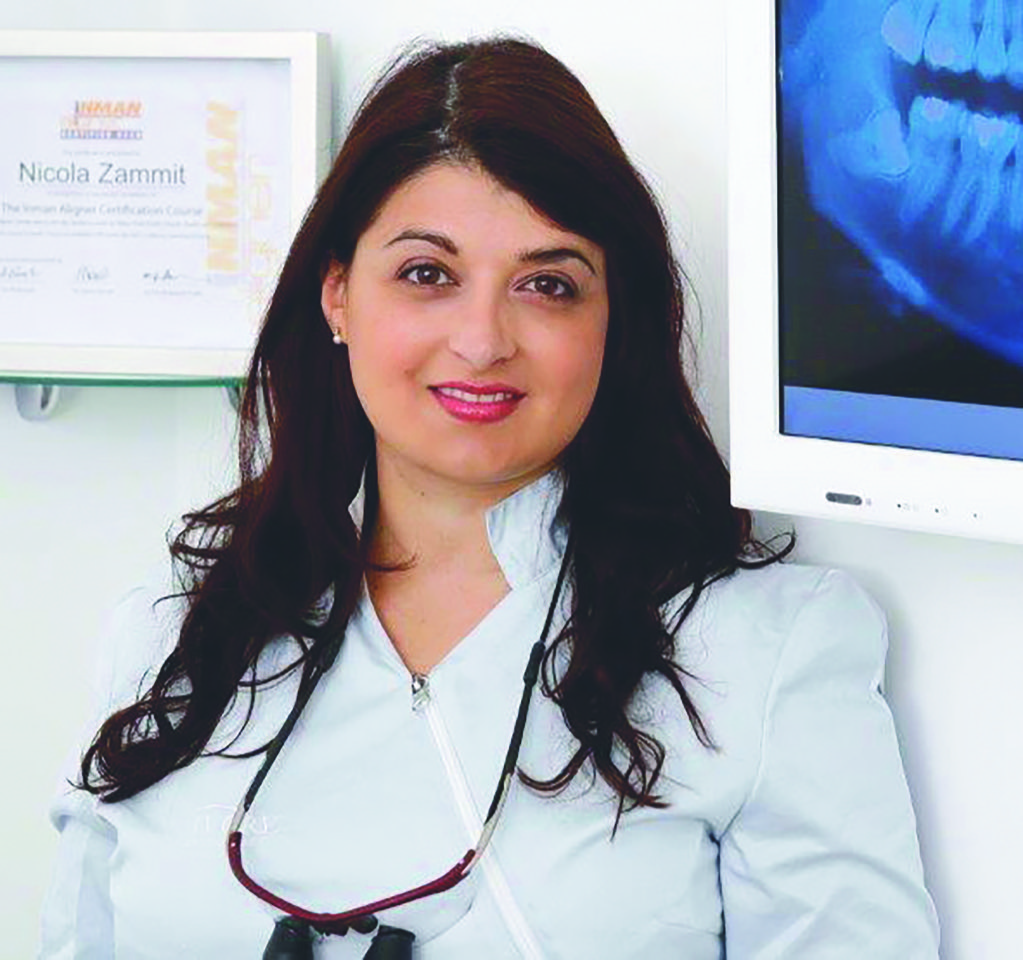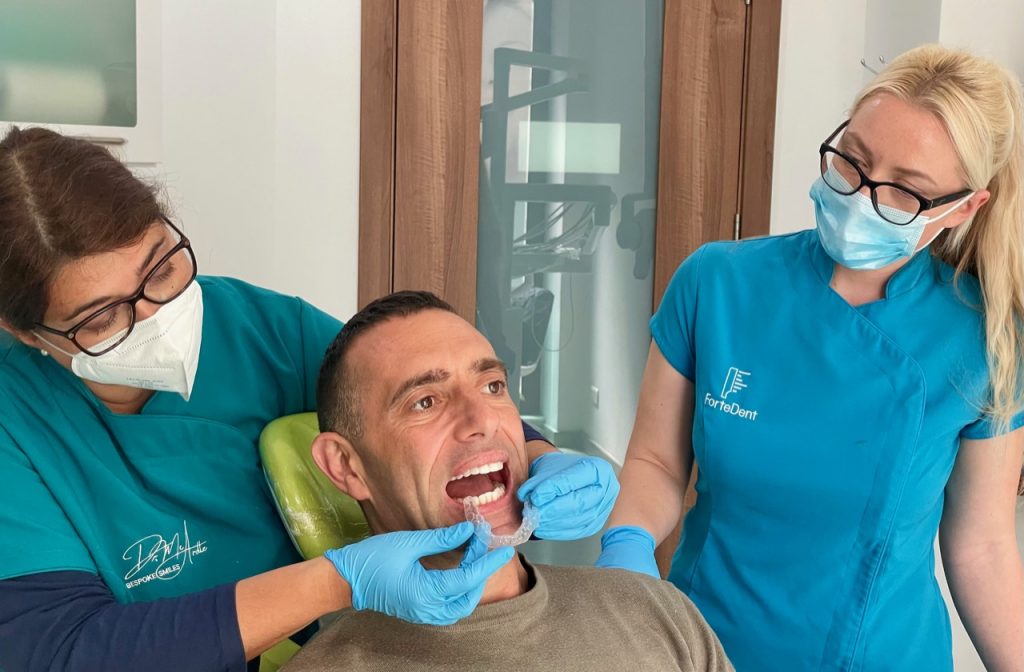sound alternative to Turkey teeth
Dr. Nicola McArdle, a dental professional from Fortedent in Sliema, shares her insights on the captivating topic of “Turkey Teeth” in an exclusive interview with Hilton Inbound

We all have come across horror stories about people getting very poor dental treatment. The term “Turkey Teeth” was coined by social media to indicate a dental procedure performed in Turkey that has gone terribly wrong. When we talk about Turkey Teeth, we often refer to dental crowns that are too white, opaque and too big as a result looking very fake. The actual teeth under these crowns are wrongly left very small and pointy as a result of excessive teeth filing which in turn may cause sensitive teeth and intense long-lasting pain. People seeking this kind of ‘quick fix’ often tend to have a lot of experience with temporary cosmetic procedures, and mistake dentistry with procedures like fillers or botox. The key difference between a filler or botox versus veneers or crowns however, is that while even the most excessive filler will dissolve, over-filed teeth won’t grow back.
It is of utmost importance therefore for patients considering such treatment to understand that this type of treatment is irreversible and must be made aware of its invasiveness as well as its potential complications and side effects as well as aftercare required. The influence of social media may distort people’s judgment in this respect also. It’s of utmost importance to get as much infor-mation as possible about your treatment options so that you can make informed choices and weigh up the pros versus cons appropriately. What concerns us dental professionals the most is that people are sacrificing biological cost over financial cost.
You’d be surprised what modern dentistry can offer at this day and age. It could spare you a lot of pain. There is nothing wrong in seeking dental treatment overseas as long as you opt for the right treatment for you and all options are discussed and considered prior to readily drilling healthy teeth and embarking on a road of no return. The cost of corrective work can amount to several times the original cost of the treatment abroad. One cannot regard this as a ’one-off’ event. In order to ensure the longest survival of your teeth, it is in your interest to undergo a proper maintenance phase of treatment. The more complex the treatment, the more important it is to maintain regular contact with your dentist. The whole aim of this article is to equip prospective patients with information about the treatment options available in modern dentistry so that they are able to make the right choice.

ALIGN, BLEACH AND BOND (AAB)
If you’re seeking a cost-effective way to improve your smile, there are options to consider nowadays. Align, Bleach and Bond is a conservative way of getting a smile makeover. Unlike some other forms of cosmetic dentistry, the ABB treatment plan is minimally invasive as you would keep as much of your natural tooth structure as possible. There’s no need for anaesthetic, injections, or cutting and shaving down of your natural teeth like veneers and crowns tend to require. It can be a cheaper solution for patients wanting to straighten and whiten their teeth. This dental technique includes a three-step approach to address 1) crooked front teeth, 2) discolouration, and 3) chipped, worn or broken teeth. How does it work? Align, Bleach & Bond combines three steps: 1. straightening your teeth, 2. whitening them 3. creating a more uniform appearance with additive resin bonding. • Align-using discrete modern, clear braces to gently guide your teeth into a more flattering position. After a thorough assessment of your mouth and face, your smile is scanned, so that a computer software can plot your treatment course and anticipated results. Aligners are then made for each stage of treatment, and you’ll typically swap them yourself every couple of weeks. Teeth straightening has actually been shown to improve your dental health be-cause it creates a more even tooth surface and straighter teeth are generally easier to clean.•
Bleach– Whilst this alignment is underway, we can simultaneously carry out teeth whitening with no harm or damage sustained to the tooth’s surface. It is not uncommon however to experience short-term sensitivity during this procedure.
Bond– Once the teeth are straight and white, their edges are built up using composite resin. We don’t always need to align teeth prior to composite bonding. It may be the best choice for people who would like to correct:
• Irregularly shaped or chipped teeth
• Fractured or cracked teeth
• Gaps between teeth
• Staining
• Short, small or worn teeth
Many people prefer bonding over veneers because it tends to be less expensive and doesn’t require shaving down your tooth enamel. Very often it is also possible to complete the process in one visit without the need of local anaesthetic.
Bonding Procedure – The dentist first roughens the surfaces of the teeth then applies a conditioning fluid that will help the resin stick to your teeth. The resin is then placed and moulded into shape. It is then set in a few seconds by means of a bright light. Finally, the resin is shaped and polished until it looks and feels natural in your mouth. How Long Does It Last?Grinding your teeth and chewing your nails can damage the composite resin. If you grind your teeth in your sleep, a mouth guard can be considered for night-time use. Grinding can wear down and chip off the resin at a faster rate. If you take good care of your teeth however, dental bonding can last up to a decade. If you do develop chips, staining, or cracks, the affected areas can be repaired by your dentist.Before and after portrait photos for a patient who underwent ABB. This patient was treated with four months of aligner treatment while simultaneously whitening her teeth followed by composite bonding matching her whiter teeth. Dental treatments should not be horror stories but nothing other than pleasant experiences. At times something as simple as non-invasive teeth whitening and composite bonding could suffice. Align, Bleach and Bond can be perfect for people with imperfect front teeth. Following this pathway could help you achieve a straighter, whiter and an aesthetically pleasing smile.
